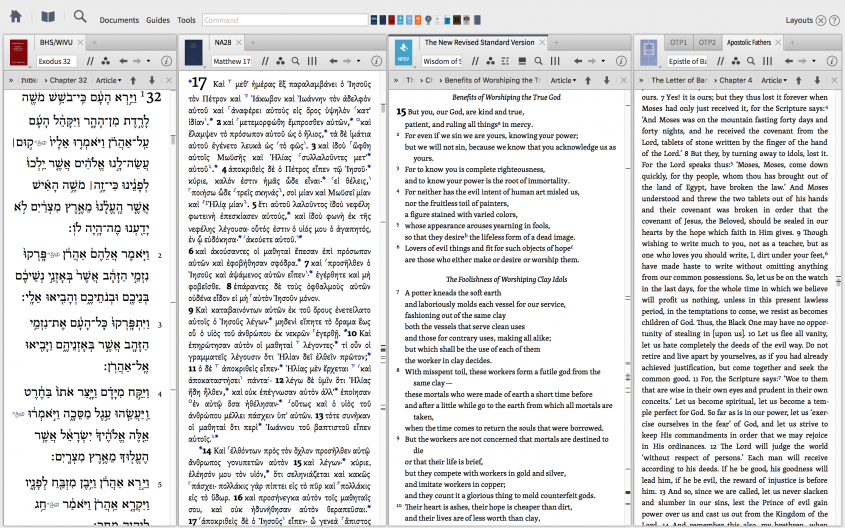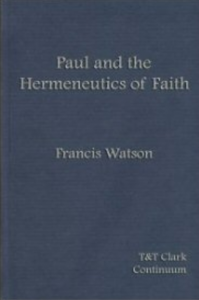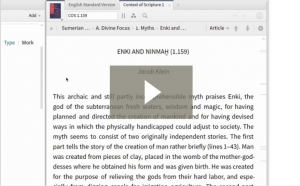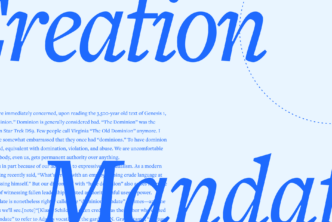“Revisionist history” is inherently redundant, since all history is revised.1
As George Bernard Shaw writes: “History is always out of date,” and is rewritten to lie, to burn, and to stick in our throats.2 That is to say, a revision may seek to humiliate and harm—especially when the social stakes are high. And the higher the stakes, the more prone the historian is to oversimplify, castigate, and construct binary oppositions.3 Conversely, a revision may seek instead to avoid hurt by glossing over and excluding shameful details, so that (ironically) history can serve more as an activity of forgetting than of remembering—not an “accidental amnesia” per se, but “a deliberate ‘not remembering’, or perhaps a ‘remembering otherwise.’”4 In this sense, borrowing from Sigmund Freud and Melanie Klein, rewriting history can involve repression with the result that the past is presented as it ought to be rather than how it was.
Finally, a revision may also be used to express regret, to work through trauma, to bear the weight of the past, or to achieve closure.
Nationalistic Revision
When one adds a nationalistic sentiment to the revisionist mix, however, there is an apologetic tendency that leads to a retractable notion of time in which historical events are annulled, bulldozed clear, or compensated for.5 At this point, “No fact, no event, and no aspect of history has any fixed meaning or content. Any truth can be retold. Any fact can be recast.”6
In short, then, to cite Marnie Hughes-Warrington, histories may be “pushed aside, turned upside down, suspended, incised, truncated, overwritten, punctured, stretched and collapsed.” They are rewritten when considered to be “too narrow, too broad, too big, too small, too distant, too close, too dynamic and too fixed.” And, with each revision, “boundaries are drawn and redrawn, setting down rules of engagement or non-engagement with others.”7
Sinai and Jewish Identity
When it comes to the ancient history of the Jews, it is difficult to overestimate the importance of the Sinai tradition.8 Within that tradition, Exodus 32–34 contains one of Israel’s most embarrassing mistakes as well as one of her most comforting promises.
In Exodus 32, as the Lord was ratifying Israel’s covenant with Moses, she was worshiping the golden calf. In Exodus 33–34, however, God mercifully renews the broken covenant, reaffirms his relationship with the people, and promises his constant presence with the nation.
Exodus Remembered (Selectively)
In light of the above conclusions regarding revisions, it should come as no surprise that, in their recounting of Exodus 32–34, certain authors have tended to stress one of these events over the others, to remember them otherwise, or to go so far as to omit one of them altogether.
The tendency occurs as early as the juxtaposition of Psalms 105 and 106. While the former hymn celebrates divine deliverance and omits the reference to the golden calf, the following psalm, in its retelling, makes no mention of the renewal but stresses instead Israel’s idolatrous act.
This canonical juxtaposition in Psalms indicates—as Francis Watson writes in Paul and the Hermeneutics of Faith—that Israel’s Exodus and wilderness narratives “can legitimately be read in both of these fundamentally different ways: as testimony to divine goodness, and as a dire warning of the consequences of sin.”9
John Barclay has surveyed the different ways a number of later authors revised the narrative of Exodus 32–34.10
For instance, despite a promise not to leave out any significant event in his history of the Jews, Josephus conspicuously skips over Israel’s worship of the golden calf—even though he surely knew the story.
According to Barclay, Josephus probably omits the event because the narrative contradicts his theological aim to present the Jews as completely faithful so as to demonstrate how the Hebrews’ history was essentially formed by the notion of human action and moral reward.
Over against Josephus, Pseudo-Philo tells the entire story—the fall and renewal— in a brutally candid expose cum highly hopeful promise. Pseudo-Philo presents the ups and downs of Exodus 32–34 as a recurrent pattern exhibited by Israel to encourage her that the Lord’s covenant remains intact despite their abject failure.
In light of these other Second Temple treatments, Barclay then proceeds to discuss Paul’s treatment of Exodus 32–34 in Romans 9–11. Barclay infers that, over against Josephus’ revision, the apostle alludes to the Sinai event to remove any trace of human worth in Israel’s election and to reduce divine choice to the Lord’s gracious will.
As with Pseudo-Philo, Paul uses the very moment that causes one to question Israel’s election as the opportunity to establish it. Paul goes beyond Pseudo-Philo, however, by finding within the narrative not only hope for Israel but for the nations as well. Despite human disobedience—of Jew or of Gentile—for Paul, the text bears witness to a “salvific power, a creative force that vivifies (and will vivify) Israel, and that is now unleashed in Christ to establish the new creation.”11
Three New Dialogue Partners
Whereas Barclay compared Second Temple treatments of Exodus 32–34 to help better understand Paul’s use of the narrative in Romans 9–11, I want to suggest another line of approach. Recently, at the University of Durham’s New Testament Seminar, I presented a paper (which will also be given in fuller form at ISBL in Berlin this summer) that places the Gospel of Matthew’s approach in handling Exodus 32–34 side-by-side with that of the Wisdom of Solomon and the Epistle of Barnabas.
I chose the author of Wisdom and the author of Barnabas as dialogue partners with Matthew because these three represent somewhat contemporaneous works, and since the First Gospel was likely written sometime between the composition of the other two.
Without getting into the details (in the interest of space), my working conclusion is that these authors engage with Exodus 32–34 in different ways for similar purposes. For instance, whereas Wisdom accentuates Exodus 34 and ignores Exodus 32 to demonstrate Israel’s faithfulness (see Wisdom 15), Barnabas highlights Exodus 32 and skips over Exodus 34 to instantiate Israel’s faithlessness (see Barnabas 4). In comparison to Wisdom, Matthew 17 also alludes to Exodus 34 in the gospel’s account of the transfiguration.

But whereas Wisdom does so to underscore Israel’s faithfulness and status as God’s people in the face of the nations’ idolatry, Matthew does so to present Jesus as the new Moses and his disciples as the new Israel. As did Moses, Matthew’s Jesus suffered reproach at the hands of stiff-necked Israel and stood alone as their mediator willing for his name to be blotted out, as it were, for their sake.12
Like Barnabas, however, Matthew 17 also draws upon Exodus 32 in the gospel’s narrative concerning Jesus’ outrage when he returns from the mountain to find the disciples’ lack of faith. While Barnabas does so to highlight the church’s faithfulness over against apostate Israel, Matthew does so to excoriate not Israel but Jesus’ disciples.
After the disciples’ ultimate failure—their abandonment of Jesus—Matthew draws one final time from Exodus 33–34 at the Great Commission (among other parallels, of course) to present the disciples as a renewed Israel ready to go to the nations.
While none of these three works qualify as historiography, and despite their own different genres, the conclusions about revisionist history above still resonate. For instance, there seems to be a growing consensus among scholars of Wisdom, Matthew, and Barnabas that the social stakes behind the respective works were high.
Thus, the tensions in each book and their consequential revisions of Exodus 32–34 can be seen in light of the authors’ struggles to explain the history of redemption with respect to Israel and the nations in response to their respective social-historical settings.
Redrawing Boundaries
What I attempt to demonstrate in my paper is that each author uses Exodus 32–34 to draw and redraw the boundaries for God’s people as well as to set down the consequential rules of engagement with the non-elect.
For Wisdom, this means excluding the embarrassing exploits of Exodus 32 and remembering Israel’s past selectively. Therefore, in an apologetic thrust, the author of Wisdom annuls, bulldozes over, and compensates for Israel’s history. Moreover, his nationalism fuelled by the persecution of his people leads him to an eventual binary opposition between God’s “righteous ones” and non-Jews.
Barnabas takes the opposite view, and uses the event of Exodus 32 to humiliate Israel and (to revise the words of George Bernard Shaw) to stick her history down her throat. Switching metaphors, the author of Wisdom hides the skeleton of the golden calf deep in Israel’s closet while Barnabas brings it out and puts it on display. Wisdom establishes Israel as the people of God; Barnabas denies them that very notion.
But what about Matthew? In contrast to both of these works, the evangelist retells and recasts the Exodus 32–34 stories. Matthew brings out Israel’s bones but disguises them in new clothes. His reworking of Exodus 32–34 thereby both bears the weight of history and achieves closure.
That is to say, for Matthew, Israel’s history is the church’s history so that the disciples’ current events are the culmination of Israel’s past choices.13
In this collective past, with its bearings on their present commission, Christ-followers find not only their values but also their identity. Matthew’s revision of Exodus 32–34 shows that the issue is not whether either the Jews or the gentiles are God’s people: God’s ecclesia is comprised of both elect Jews and converted gentiles. With his retelling, then, Matthew gathers up the transient and fragmentary parallels of Israel’s past into Christ and his church in order to transcend them all.14
This is a work in progress, and I welcome your comments, questions and constructive criticism.

Joseph R. Dodson (Joey) is an associate professor of Biblical Studies at Ouachita Baptist University in Arkadelphia, Arkansas. He completed his PhD at the University of Aberdeen and was a guest researcher at the University of Tübingen. He has written a number of articles for academic journals such as Catholic Biblical Quarterly and the Journal for Jewish Studies as well as essays in various volumes such as Paul and the Apocalyptic Imagination, and Reading Romans in Context. He is the author of A Little Book for New Bible Scholars with E. Randolph Richards, and The ‘Powers’ of Personification: Rhetorical Purpose in the ‘Book of Wisdom’ and the Letter to the Romans. Moreover, he is the editor of Paul and the Second Century with Michael F. Bird; Paul and Seneca in Dialogue with David E. Briones; as well as Paul and his Greco-Roman Philosophical Tradition with Andrew W. Pitts. His wife, Sadie, was his elementary school sweetheart, and they have five children: Mattie Mae, Kinnon Scott, Aidan, Iain, and Caspian. You can follow Joey on Twitter @jrrdodson.
- Just between 2006–2013, the Wikipedia article on historical revisionism has been subject to over 500 edits.
- George Bernard Shaw, Saint Joan (London: Penguin, 2001), 57.
- R. F. Berkhofer, A Behaviourial Approach to Historical Analysis (New York: The Free Press, 1969), 15.
- Judith Lieu, Christian Identity in the Jewish and Graeco-Roman World (Oxford, Oxford University Press, 2004), 64.
- Jürgen Habermas and Jeremy Leaman, “A Kind of Settlement of Damages (Apologetic Tendencies),” New German Critique 44 (1988), 25-39 (27).
- Deborah E. Lipstadt, Denying the Holocaust: The Growing Assault on Truth and Memory (2nd edition; London: Plume, 1994), 6. See also Alan Badiou, Saint Paul: The Foundation of Universalism (translated by Ray Brassier; Stanford, CA: Stanford University Press, 2003), 44.
- Marnie Hughes-Warrington, Revisionist Histories (London: Routledge, 2013), 89.
- Jörg Jeremias, Theophanie, Die Geschichte einer alttestamentlicher Gattung (Neukirchener: Neukirchener Verlag, 1965), 100.
- Francis Watson, Paul and the Hermeneutics of Faith (London: T & T Clark, 2004), 384.
- John M. G. Barclay, “‘I will have mercy on whom I have mercy’: Mercy in Romans 9–11 and Second Temple Judaism,” Early Christianity 1 (2010): 82–106.
- Barclay, “Mercy,” 105-106.
- See George B. Caird, “The Transfiguration,” Expository Times 67 (1956), 291–94 (293).
- I am indebted to Dr. Casey Motl, my friend and university colleague, for his insights on “bearing the weight” of history.
- Caird, “Transfiguration,” 293.






